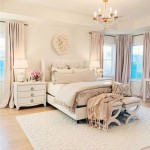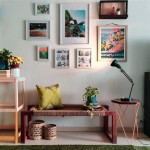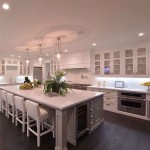Embracing Tranquility: A Guide to Moroccan Style Bedroom Decor
Moroccan style bedroom decor offers a unique blend of rich cultural heritage and luxurious aesthetics. This style draws inspiration from the diverse landscapes and artistic traditions of Morocco, incorporating vibrant colors, intricate patterns, and natural materials to create a serene and inviting space. Achieving a truly authentic Moroccan-inspired bedroom involves understanding the core elements of the style and thoughtfully implementing them within the existing space.
The appeal of Moroccan decor lies in its ability to evoke a sense of exoticism and relaxation. It's a style that promotes a feeling of escape, transforming the bedroom into a personal sanctuary. This article will explore the key elements of Moroccan style bedroom decor, providing actionable strategies for incorporating this timeless aesthetic into your home.
Color Palette: A Symphony of Warmth and Opulence
Color plays a crucial role in establishing the foundation of Moroccan decor. The palette typically revolves around warm, earthy tones, reflective of the desert landscape and sun-drenched architecture of Morocco. Key colors include terracotta, ochre, sand, and deep reds. These hues create a sense of warmth and grounding, providing a soothing backdrop for the more intricate details of the design.
Introducing vibrant jewel tones, such as sapphire blue, emerald green, and ruby red, adds depth and richness to the color scheme. These colors are often used in accent pieces, such as cushions, throws, and artwork, to create visual interest and evoke the opulence associated with Moroccan design. While using bold colors is typical of the style, it is important to maintain balance to avoid overwhelming the space. Consider using neutral tones as a canvas and layering in brighter colors strategically.
The use of white and off-white colors is also common, especially for walls and ceilings. These neutral tones provide a sense of airiness and brightness, contrasting with the richer, warmer hues that are used elsewhere in the room. White can also be used to highlight architectural details and create a clean, sophisticated look.
When selecting colors, consider the size and natural light of the room. Smaller rooms may benefit from lighter colors to create an illusion of spaciousness, while larger rooms can handle richer, darker tones. Natural light is also an important factor, as it can affect how colors appear in the space. Experiment with different color combinations to find a palette that resonates with your personal style and creates the desired atmosphere.
Textiles and Patterns: Weaving a Tapestry of Texture
Textiles are an integral part of Moroccan decor, adding texture, warmth, and visual interest to the space. Rich fabrics, such as silk, velvet, and cotton, are commonly used for bedding, curtains, and upholstery. These materials create a luxurious feel and enhance the overall sense of opulence.
Intricate patterns are also a hallmark of Moroccan design. Geometric patterns, such as the eight-pointed star (known as the Rub el Hizb) and arabesque motifs, are frequently incorporated into textiles, tiles, and woodwork. These patterns add a sense of complexity and depth to the decor, reflecting the intricate artistic traditions of Morocco.
Moroccan rugs are essential for completing the look. These rugs are often hand-knotted and feature bold colors, geometric patterns, and intricate designs. They not only add warmth and comfort to the floor but also serve as a focal point in the room. Consider using a large area rug to anchor the furniture arrangement and define the space.
Cushions and throws are another important element of Moroccan decor. These accessories can be used to add pops of color, texture, and pattern to the bed, seating area, or floor. Look for cushions and throws made from luxurious fabrics, such as silk, velvet, and brocade, and adorned with intricate embroidery or embellishments.
Consider layering different textures and patterns to create a visually rich and dynamic space. Combine smooth fabrics with rougher textures, such as woven rugs or embroidered cushions, to create depth and interest. Don't be afraid to mix and match different patterns, as long as they complement each other harmoniously.
Furniture and Lighting: Crafting an Authentic Ambiance
Furniture in a Moroccan-style bedroom should be both functional and aesthetically pleasing, often featuring ornate details and natural materials. Low-slung beds, carved wooden tables, and intricate metal lanterns contribute to the overall ambiance. Opt for furniture with a rustic or slightly distressed finish to enhance the authenticity of the design.
Lighting plays a crucial role in creating the desired atmosphere. Soft, diffused lighting is essential for creating a sense of warmth and relaxation. Use a combination of ambient, task, and accent lighting to achieve the desired effect. Moroccan lanterns, pendant lights, and wall sconces are ideal for adding a touch of exoticism and casting intricate shadows on the walls.
Metalwork is another important element of Moroccan decor. Intricate metal lanterns, trays, and mirrors can be used to add a touch of elegance and sophistication to the space. Look for pieces with intricate patterns and designs, such as geometric motifs or floral embellishments. Silver, gold, and brass are common metals used in Moroccan decor.
Consider incorporating natural elements into the furniture and decor. Wooden furniture, woven baskets, and potted plants can add a sense of warmth and organic beauty to the space. These elements also help to create a connection to nature, which is an important aspect of Moroccan design.
When arranging furniture, aim for a balanced and harmonious layout. Avoid overcrowding the space and leave plenty of room for movement. Create a focal point, such as the bed or a seating area, and arrange the furniture around it. Consider using symmetry to create a sense of order and balance.
Archways, a common feature in Moroccan architecture, can be replicated using paint or decorative molding to add an authentic touch. These architectural details can frame a doorway, window, or even a headboard, enhancing the overall aesthetic.
Incorporating a seating area with floor cushions and a low table can create a relaxed and inviting space for lounging. This area can be used for reading, meditation, or simply relaxing and enjoying the ambiance of the room.
Ultimately, creating a Moroccan-style bedroom is about creating a space that is both beautiful and functional. By carefully selecting colors, textiles, furniture, and lighting, one can transform a bedroom into a tranquil sanctuary that reflects the unique cultural heritage of Morocco.

19 Moroccan Bedroom Decoration Ideas Innenarchitektur Wohimmer Schlafzimmer Design Ideen Wohnung

Moroccan Bedrooms Ideas Photos Decor And Inspirations

Moroccan Interior Design Ideas For Your Home Designcafe

70 Mysterious Moroccan Bedroom Designs Digsdigs

40 Moroccan Bedroom Ideas Themed Bedrooms Decoholic Luxurious Mediterranean Home Decor

1001 Arabian Nights In Your Bedroom Moroccan Décor Ideas

Decorate Your Bedroom Moroccan Style L Esseiale

32 Aesthetic Moroccan Bedroom Designs Housetodecor Com

Moroccan Interior Design Ideas For Your Home Designcafe

Moroccan Bedrooms Ideas Photos Decor And Inspirations
Related Posts







